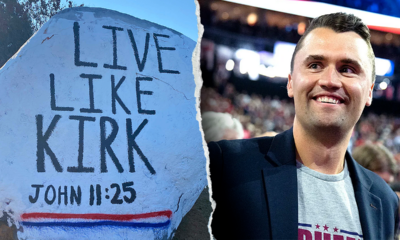With less than a week left before they have to turn in signatures, labor leaders are scrambling to collect enough signatures to put a referendum on the ballot to repeal a law cracking down on unions passed during the last legislative session.
April 15 is the final day Utahns can sign petitions for the “Protect Utah Workers” referendum, and organizers are planning to submit their signature packets the following day to county clerks to be verified.
“This is the big push this last week,” said Renee Pinkney, president of the Utah Education Association. “We’re in the home stretch, and we need people to get out to the various events, and we still need people to sign petitions right up until April 15.”
UEA, AFL-CIO, Utah Public Employees Association, Utah Professional Firefighters, AFSCME and others have banded together in an attempt to repeal HB267, which bans collective bargaining with government employers — meaning those public employee unions cannot represent members in contract negotiations.
(Bethany Baker | The Salt Lake Tribune) Union workers host a signature gathering event to put a referendum on the 2026 ballot to rescind HB267, a law that affects the ability of public workers to organize, at University of Utah in Salt Lake City on Friday, March 21, 2025.
“We’re coming down to the wire and its always one of those ‘hold your breath, here you go guys’ [things],” said Jeff Worthing, president of the Utah AFL-CIO. “You just pray that everyone has done the right process in getting the signatures and that they all verify out, because if they don’t … then it was all for naught, so it can be a little nerve-wracking.”
During the final week, Pinkney said organizers are trying to ensure volunteers who have taken packets out remember to return them, whether the packets are full of signatures or not.
Utah has the most onerous referendum law in the country. To get a repeal measure on the ballot, supporters have 30 days to gather signatures from 8% of the registered voters statewide — equating to 140,748 people — as well as meet that same 8% threshold in 15 of the state’s 29 Senate districts. Those targets range from about 3,000 to 5,700, depending on the district.
Currently, organizers believe they have enough signatures in six Senate districts, but still need to meet their targets in nine more.
Pinkney said efforts are focused intensively in this final week on gathering signatures in critical areas of Davis and Utah counties.
The referendum movement has been bankrolled in large part by money from the National Education Association and teacher unions around the state and country. The Protect Utah Worker Political Issues Committee has reported receiving nearly $2.6 million, which includes a $1 million contribution from NEA and another roughly $750,000 in in-kind donations — things like payments to professional signature gatherers, Spanish translation of materials and supplies.
In addition, after the signatures are submitted, opponents of the referendum have 45 days to contact voters who signed the packets and try to convince them to rescind their support.
While labor groups had collected more than 130,000 signatures as of March 28 and say they now have more than the required number of signatures in hand, but they are finding more than expected are invalid for various reasons, prompting them to raise their signature goal before the deadline.
(Bethany Baker | The Salt Lake Tribune) Union workers host a signature gathering event to put a referendum on the 2026 ballot to rescind HB267, a law that affects the ability of public workers to organize, at University of Utah in Salt Lake City on Friday, March 21, 2025.
Groups supporting the collective bargaining ban are mounting their own offensive. The Utah chapter of the Koch brothers-backed Americans For Prosperity is running ads urging voters to “Decline to Sign.” Utah Parents United is pushing back, as well, accusing teachers of putting their own paydays ahead of students’ well-being.
The bill the Legislature passed is good policy, said Kevin Greene, state director of Americans for Prosperity.
“I think it protects taxpayers,” he said. Unlike when private companies negotiate with unions, Greene said, with public employee unions, “the taxpayer is the ultimate person who is being negotiated against and we actually don’t have any say as taxpayers when collective bargaining is happening.”
That said, based on the 130,000-signature figure previously released, Greene said he thinks “they’re well on their way to more than enough signatures.”
If the unions do get enough, Greene said AFP will see if there are specific districts where it can get involved to knock off enough to make a difference.
Worthington said he has seen huge momentum for the effort to repeal the anti-union law and doesn’t think the opposition efforts will make a dent.
“People are tired of the bulls—,” Worthington said. “They’re tired of the attacks on working-class people. They’re tired of the attacks from our own legislators and government.”









































